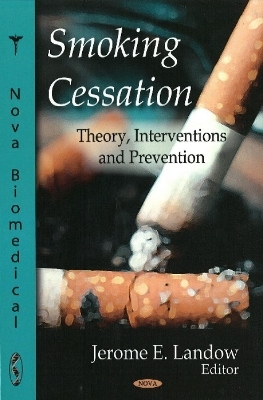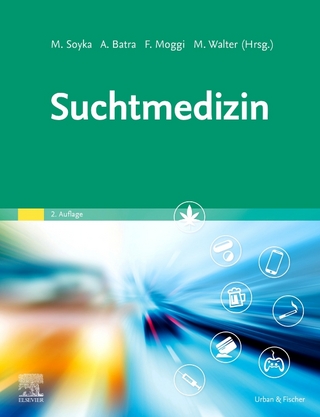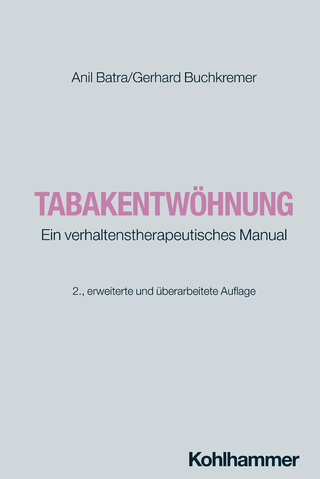
Smoking Cessation
Nova Science Publishers Inc (Verlag)
978-1-60021-591-9 (ISBN)
Smoking is the most common risk factor for the development of lung cancer, which is the leading cause of cancer death. It is also associated with many other types of cancer, including cancers of the oesophagus, larynx, kidney, pancreas, and cervix. Smoking also increases the risk of other health problems, such as chronic lung disease and heart disease. Smoking during pregnancy can have adverse effects on the unborn child, such as premature delivery and low birth weight. The health benefits of smoking cessation (quitting) are immediate and substantial. Almost immediately, a person's circulation begins to improve and the level of carbon monoxide in the blood begins to decline. (Carbon monoxide, a colourless, odourless gas found in cigarette smoke, reduces the blood's ability to carry oxygen.) A person's pulse rate and blood pressure, which may be abnormally high while smoking, begin to return to normal. Within a few days of quitting, a person's sense of taste and smell return, and breathing becomes increasingly easier. People who quit smoking live longer than those who continue to smoke. After 10 to 15 years, a previous tobacco user's risk of premature death approaches that of a person who has never smoked. Quitting smoking reduces the risk for developing cancer, and this benefit increases the longer a person remains "smoke free". Quitting smoking may cause short-term after-effects, especially for those who have smoked a large number of cigarettes for a long period of time. People who quit smoking are likely to feel anxious, irritable, hungry, more tired, and have difficulty sleeping. They may also have difficulty concentrating. Many tobacco users gain weight when they quit, but usually less than 10 pounds. These changes do subside. This book presents new and important research in this bewildering field.
Preface; "A Day in the Life of...: The Culture of Cigarette Smoking for Psychiatric Populations"; College Smoking Prevention and Cessation: Engaging Students in the Search for Solutions; Smoking Cessation among College Students: Challenges and Outcomes; Physician Intervention for Smoking Cessation; Grounding Research for Testing Models of Smoking Cessation Behaviour: Theory of Reasoned Action and Theory of Planned Behaviour; New Research on Smoking Cessation with Alcohol and/or Drug Users; Cigarette Craving: Exploring the Enigma; Smoking Cessation in Patients with Cardiovascular Diseases and COPD; Preoperative Smoking Intervention; Nicotine Use and Weight in Women (Nicotine Use and Weight-Related Issues in Women); Wishing and Accomplishing: Motivations for Smoking Cessation; Impact of Smoking and Smoking Cessation to Successful Ageing; Biochemical Feedback to improve Smoking Cessation Interventions-Results from a Point-Of-Care Test for Nicotine Metabolites in Urine or Saliva; The role of oral health professionals in tobacco cessation; Index.
| Erscheint lt. Verlag | 1.1.2008 |
|---|---|
| Zusatzinfo | Illustrations |
| Verlagsort | New York |
| Sprache | englisch |
| Maße | 260 x 180 mm |
| Gewicht | 1160 g |
| Themenwelt | Medizin / Pharmazie ► Medizinische Fachgebiete ► Suchtkrankheiten |
| ISBN-10 | 1-60021-591-2 / 1600215912 |
| ISBN-13 | 978-1-60021-591-9 / 9781600215919 |
| Zustand | Neuware |
| Haben Sie eine Frage zum Produkt? |
aus dem Bereich


